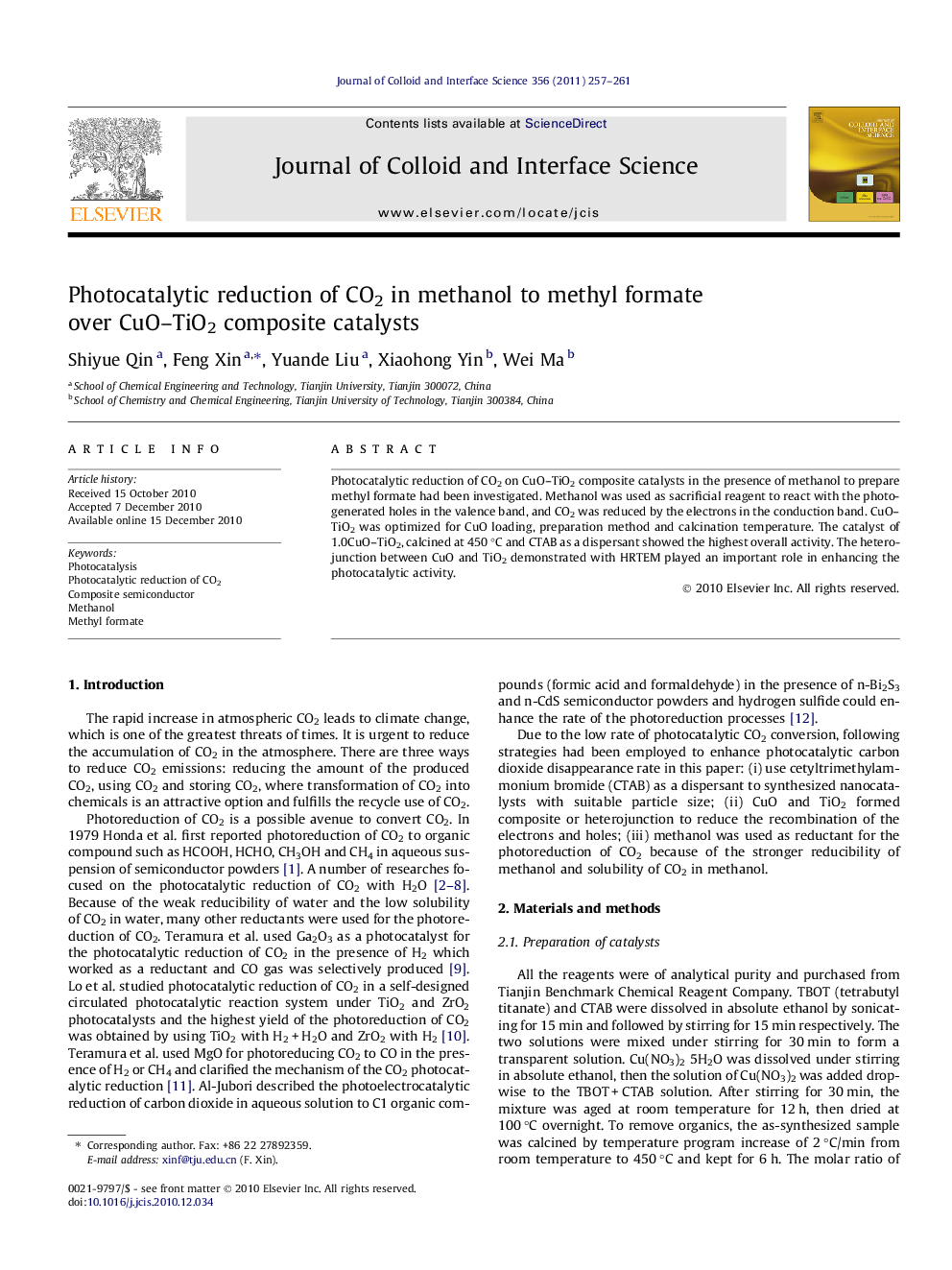| Article ID | Journal | Published Year | Pages | File Type |
|---|---|---|---|---|
| 608730 | Journal of Colloid and Interface Science | 2011 | 5 Pages |
Photocatalytic reduction of CO2 on CuO–TiO2 composite catalysts in the presence of methanol to prepare methyl formate had been investigated. Methanol was used as sacrificial reagent to react with the photo-generated holes in the valence band, and CO2 was reduced by the electrons in the conduction band. CuO–TiO2 was optimized for CuO loading, preparation method and calcination temperature. The catalyst of 1.0CuO–TiO2, calcined at 450 °C and CTAB as a dispersant showed the highest overall activity. The heterojunction between CuO and TiO2 demonstrated with HRTEM played an important role in enhancing the photocatalytic activity.
Graphical abstractThe surface-phase junction of the CuO–TiO2 composite catalyst, band positions of CuO, TiO2 and the potentials of several redox couples.Figure optionsDownload full-size imageDownload high-quality image (143 K)Download as PowerPoint slideResearch highlights► Methanol was utilized as reductant for the photoreduction of CO2 because the reducibility of methanol is stronger than water and methanol can dissolve much more CO2 than water. ► CuO–TiO2 composite catalysts were used and the catalysts were prepared through a sol–gel method using cetyltrimethylammonium bromide (CTAB) as an auxiliary reagent. ► The surface-phase junction between CuO and TiO2 was investigated by HRTEM and it could enhance the photocatalytic activity.
